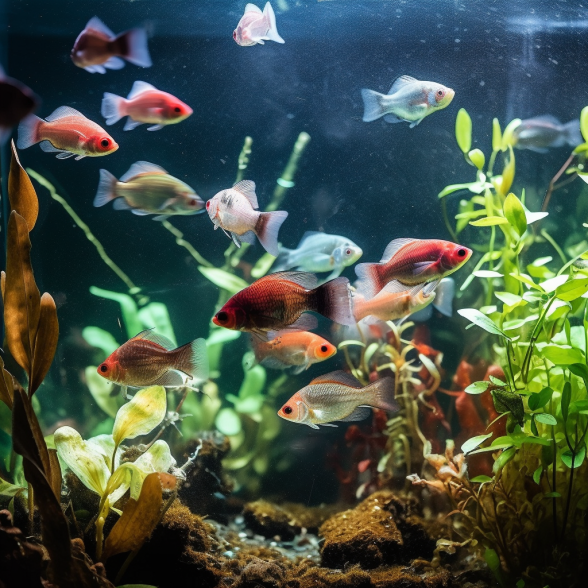Fish diseases can be a common challenge for aquarium owners, but with proper prevention and prompt treatment, you can help keep your fish healthy and thriving. In this blog post, we will explore some of the most common fish diseases, their causes, prevention strategies, and possible cures.
1. Ich (White Spot Disease)
Cause: Ichthyophthirius multifiliis, a parasite that appears as white spots on the fish’s body.
Prevention: Maintain good water quality, avoid sudden temperature fluctuations, and quarantine new fish before introducing them to the main tank.
Treatment: Increase the water temperature to 86°F (30°C), treat with medications containing malachite green or formalin, and continue treatment until all signs of the disease have disappeared.
2. Fin Rot
Cause: Bacterial infection resulting from poor water quality, stress, or physical injuries.
Prevention: Maintain clean water conditions, provide a well-balanced diet, and minimize stress factors.
Treatment: Improve water quality, remove any damaged fins, and treat with antibiotics prescribed specifically for fin rot. Follow the instructions carefully and continue treatment until the fins show signs of regeneration.
3. Velvet (Gold Dust Disease)
Cause: Parasitic infection caused by Piscinoodinium pillulare, which manifests as a fine yellowish/golden dust on the fish.
Prevention: Quarantine new fish before introducing them to the main tank, maintain good water quality, and avoid overcrowding.
Treatment: Increase the water temperature to 82-86°F (28-30°C), treat with medications containing copper sulfate or malachite green, and continue treatment for the recommended duration.
4. Dropsy
Cause: Bacterial infection affecting the fish’s internal organs, often caused by poor water quality or an underlying health issue.
Prevention: Maintain excellent water quality, perform regular water changes, and provide a balanced diet.
Treatment: Unfortunately, dropsy is often fatal. However, early detection and treatment with antibiotics can sometimes help. Isolate the infected fish, improve water quality, and consult with a veterinarian for the appropriate antibiotics.
5. Swim Bladder Disorder
Cause: Swim bladder dysfunction caused by various factors, including overfeeding, constipation, or physical injury.
Prevention: Feed a varied and balanced diet, avoid overfeeding, and provide adequate hiding places to prevent physical injury.
Treatment: Isolate the affected fish and provide a varied and balanced diet. If constipation is the cause, offer peas or other fiber-rich foods. In some cases, time and supportive care may help the fish recover on its own.

